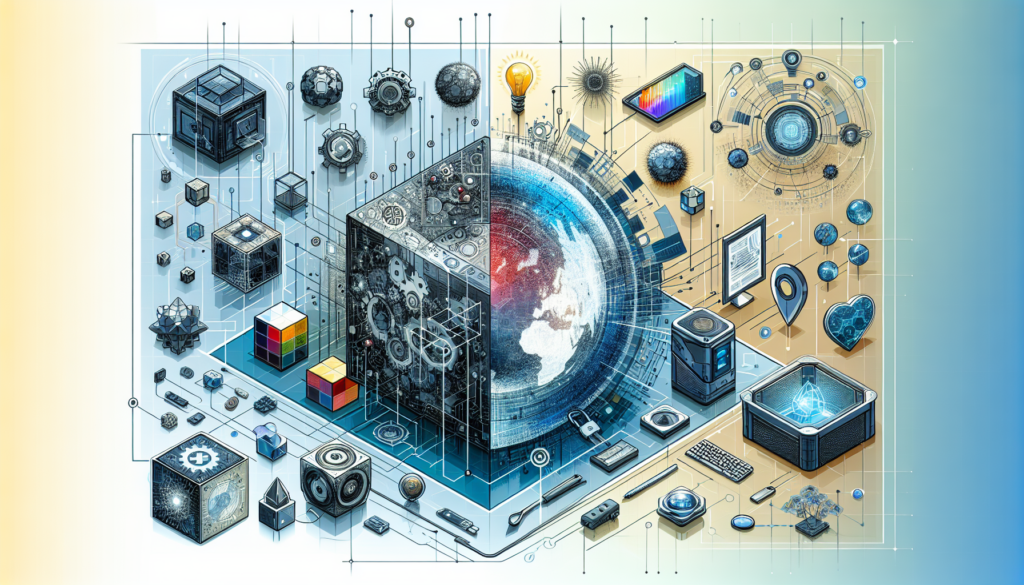On the threshold of a new technological year, the outlook for 2023 is filled with innovations and advancements that promise to transform not only the way we interact with devices, but also how we perceive our environment and ourselves. This article delves into the most exciting technological trends of 2023, exploring the latest technical advancements, their application in the real world, and the future implications that these developments may have across different industries and in our everyday lives.
Artificial Intelligence and Machine Learning
Advanced AI and Natural Language Models: Models like GPT-4 and their competitors strive for an understanding and generation of language closer to human capability. These AI models can now create content, respond to queries, and analyze information with unprecedented accuracy.
Automation and Robotics: The synergy between AI and robotics is leading to the creation of more autonomous robots capable of learning and adapting to changing environments, opening new opportunities in logistics, manufacturing, and assisted surgery.
Quantum Computing
Scale and Coherence: Researchers and companies struggle to achieve quantum supremacy with more stable and powerful computers, where the coherence of qubits is maintained for longer periods allowing for more complex computations.
Post-Quantum Cryptography: In response to the threat that quantum computing poses to current cryptography, new algorithms resistant to quantum attacks are emerging, ensuring cybersecurity in the post-quantum era.
Biotechnology and Genetic Engineering
CRISPR-Cas9 Gene Editing: With new improvements, the CRISPR-Cas9 technique is being refined to treat diseases more accurately and safely. This breakthrough suggests the promise of personalized medicine where genetic treatments become the norm.
Bioinformatics: The interpretation of vast sets of biological data through AI is providing revolutionary insights into biology and pharmaceuticals, paving the way for the accelerated development of drugs and personalized therapies.
Renewable Energy and Sustainability
Fusion Energy: Nuclear fusion, considered the ‘Holy Grail’ of renewable energies, could reach significant milestones in 2023, as projects like ITER progress towards the production of clean and virtually unlimited energy.
Energy Storage: Battery technologies are making significant advances, with new materials and designs promising greater capacity, faster charging speeds, and longer lifespans, which is crucial for the long-term viability of renewable energies.
Space Technology
Satellite Internet: With Starlink leading the race, 2023 will see satellite internet access become more accessible and reliable, providing connectivity in the most remote regions of the planet.
Space Tourism: Companies like SpaceX and Blue Origin are opening the door to space tourism for non-astronauts, with suborbital flights offering unique experiences, while preparing for future lunar missions and eventually to Mars.
Extended Reality (XR)
Virtual Reality (VR): The new VR devices are becoming more immersive and include eye tracking and haptic feedback, applicable to training, entertainment, and therapy.
Augmented Reality (AR) and Metaverses: With improvements in digital-physical integration, 2023 brings with it new developments in AR and metaverses offering richer and more connected experiences, with applications ranging from education to commerce.
To exemplify these trends with case studies, we could consider applications of AI in early disease detection. Projects like Google Health AI have shown how AI models can match or even surpass human experts in diagnostic accuracy. In renewable energy, we can observe the rapid adoption of solar and wind power into the world’s energy capacity, where countries like Germany are leading the shift to clean energies through investment policies and technological development. In space tourism, SpaceX’s Inspiration4 mission, which launched civilians into space in 2021, sets the precedent for future developments and commercial applications of space tourism in 2023 and beyond.
Looking to the future, it is clear that the technological trends of 2023 not only reflect what is technologically possible today but also point towards where humanity might head. The convergence of different technological fields suggests a landscape of innovation and interdisciplinary collaboration that could solve some of the most pressing challenges of our time and open new horizons for human exploration. These trends, supported by substantial technical developments and their real-world implementation, promise a year of exciting and transformative advances.

